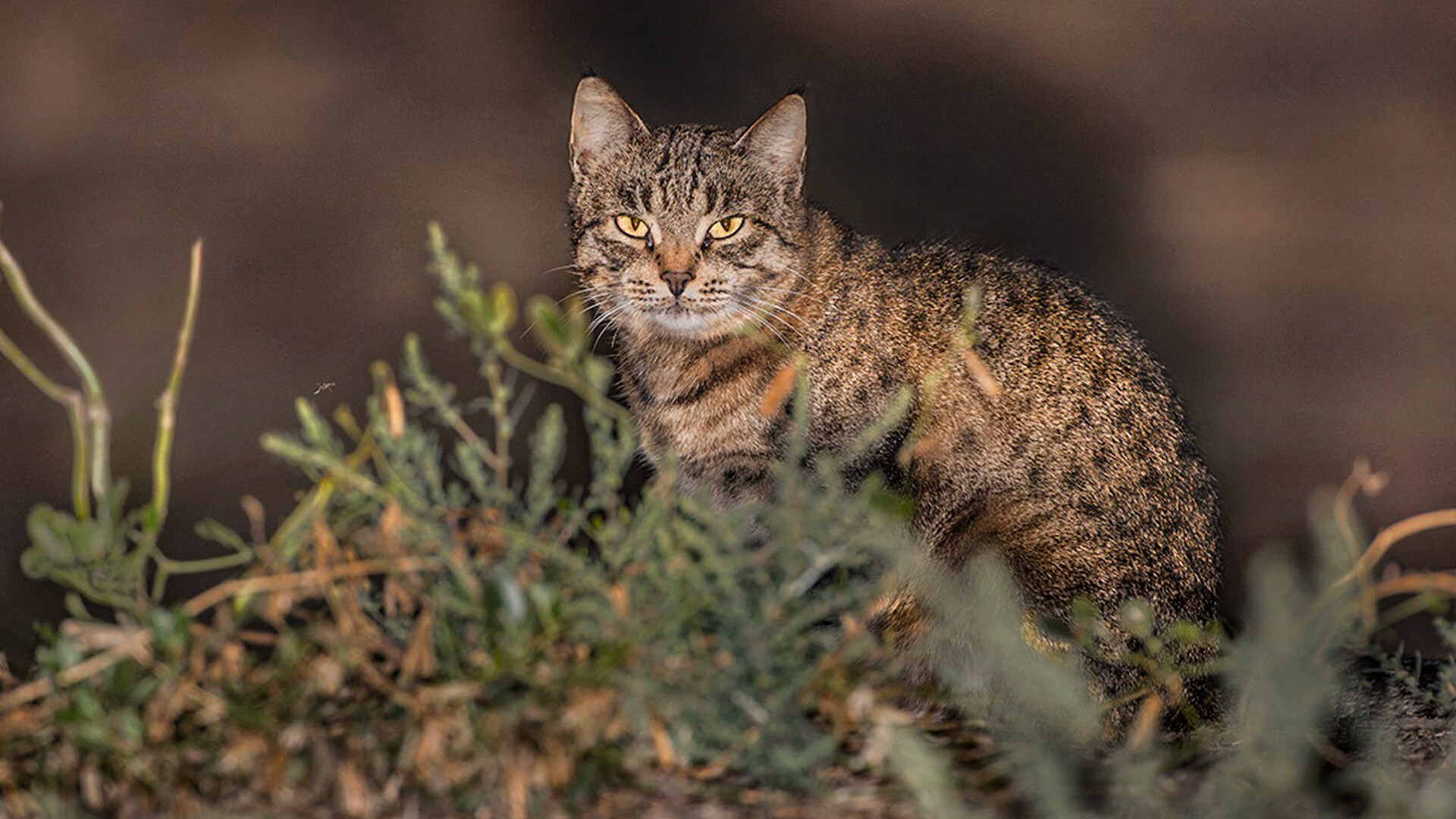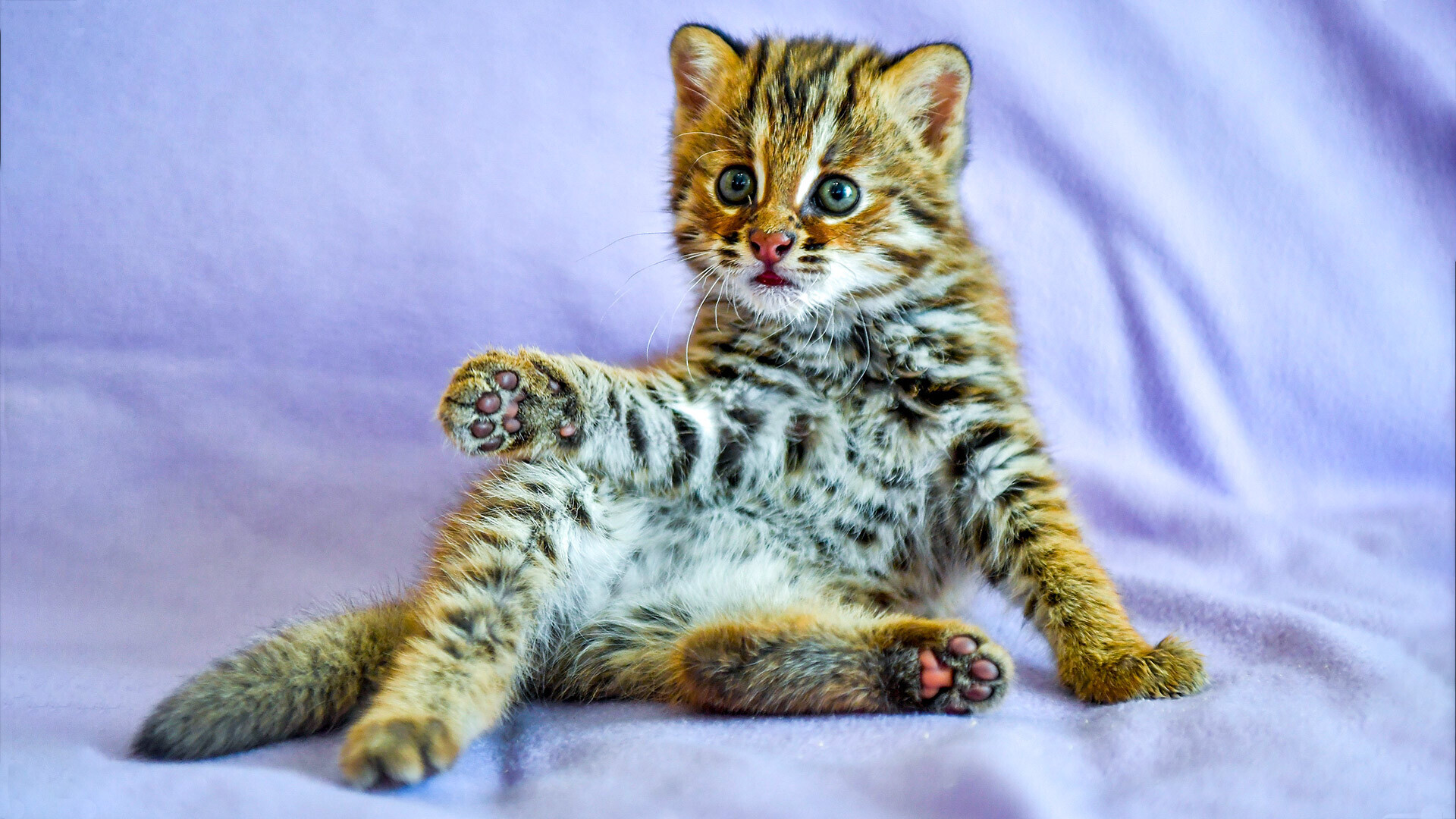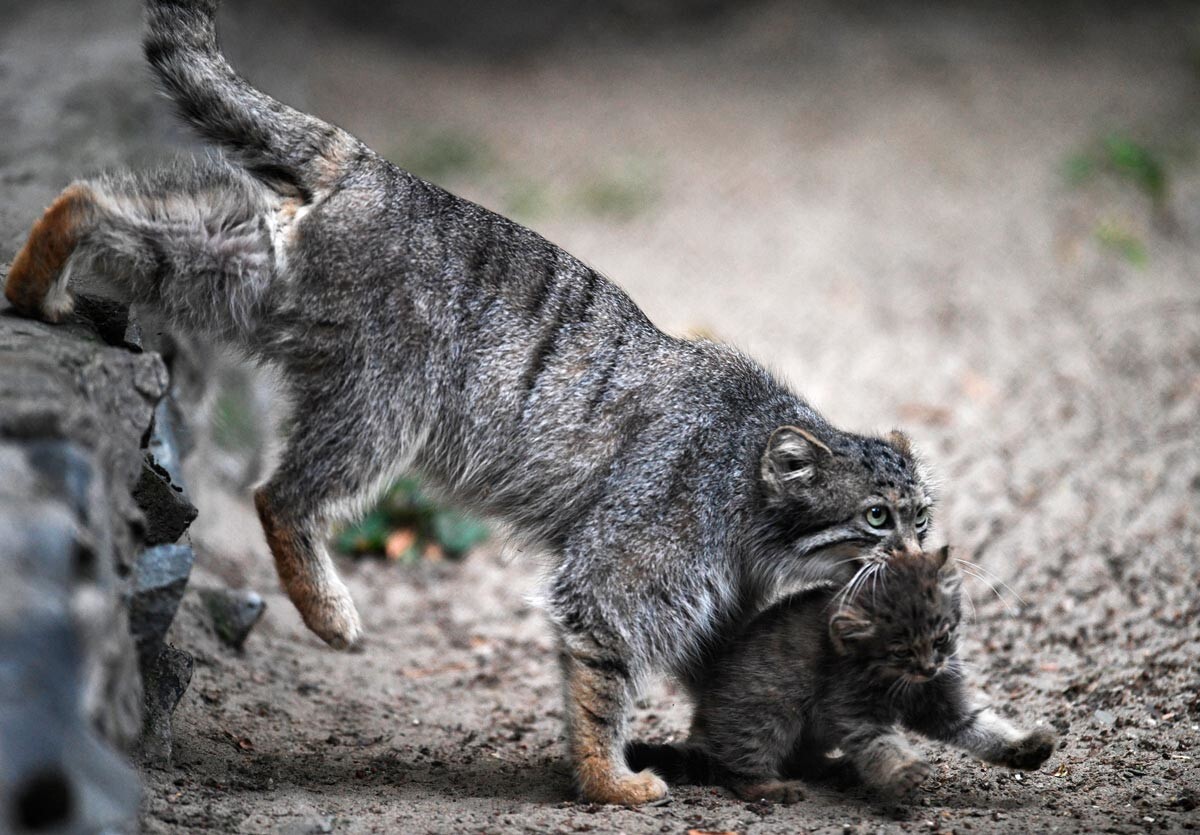
“Go away with your hugs, I’m not your pet!”
Valery MoseykinNot only big cats can be wild! Besides lynxes, leopards and tigers, there are several kinds of cats who live in the wild and look almost like a pet. Imagine that you’re having a walk in a Russian forest and suddenly meet a small tabby-like cat. Please, don’t consider it lost or homeless - such cats don’t need (or want!) your company and prefer to hunt on their own.
You’ve seen cats with this fur pattern a million times! But can you imagine that this wildcat (a relative to a European wildcat) is one of the most dangerous predators in the Caucasian mountain forests? It lives in Dagestan, North Ossetia, Kabardino-Balkaria, and other regions of the Russian Caucasus. Like any cat, it likes high places, but, unlike domestic cats, it prefers not a closet, but mountain heights up to 3,000 meters above sea level. In the Caucasus, there are enough such places, as well as plenty of food for this furry cat.
And now, just think that this cat hunts not only mice and birds, but also small hares and fish, if necessary. It knows how to ambush attack. It kills quickly and with no regret, biting into the victim’s carotid artery. And immediately eats the vital organs: heart, liver, lungs. In short, the victim has no chance.
It differs from a domestic cat by its greater weight (up to 4-6 kg) and severe look. Of course, like any wild animal, it avoids people, but, during mating season, it can crossbreed with domestic cats, if they are nearby.
No one knows the exact number of the Caucasian wild cat, but it is about 3,000 to 40,000 individuals. The animal is listed in the Red Book of Russia.
This beautiful and elegant cat is considered a real ancestor of all modern domestic cats. Scientists believe that it was African steppe cats that gradually became domestic about 9,000 years ago in the Middle East and then began to accompany the ships fighting mice and rats - and that’s how they spread across the world. Most often, these wildcats live in Africa and Asia.
In Russia, wild steppe cats only began to be documented 30 years ago. They live in the steppes of Kalmykia, Astrakhan and the Nogai steppes of Dagestan. These species are rare and are also listed in the Red Books of these regions; moreover, it is likely that some of the species are a hybrid of steppe cat and feral domestic cat.
The steppe cat has a lighter coat compared to the forest cat and a slimmer body with long legs. It doesn’t have a lot of fur. It loves water, unlike other felines, but hates snow. Most of the time, this wildcat lives in crevices of rocks.
The employees of the Chernye Zemli Nature Reserve in Kalmykia often publish videos of steppe cats that come to watering holes or watch saigas, apparently imagining themselves to be tigers. At least, they look at large prey with great gastronomic interest.

This cat really looks like a mini leopard, especially as a kitten! The Amur cat is a northern subspecies of the Bengal cat - the one that inhabits the tropics of Indonesia and the islands of Japan. The Amur leopard cat likes water and lives near the shores of the large Khanka Lake in the Far East, surrounded by forests, as well as in the ‘Zemlya Leoparda’ (Land of the Leopard) national park. This cat is a great swimmer and a great climber and can scale both trees and rocks, where it can mount ambushes.
The chances of seeing this cat in the wild are slimmer than those of encountering a tiger, although the two are neighbors. The Far Eastern leopard cat has been put on the Red List of endangered species and is considered so rare that scientists have been having trouble estimating how many of them remain. Nevertheless, locals believe that the number has been on the rise in recent years.
It has several names - reed cat, swamp cat, swamp lynx or just jungle cat. As a rule, these cats live in China and Central Asia, but, in Russia, they can only be found in the plains of Dagestan. In all, there are only about 500 of them left in the wild (less than Amur tigers!) and are, of course, also included in the Red Book of Russia.
It differs from domestic cats by its large size (8-12 kg) and rather short tail. As is clear from its name, it likes reed beds and reeds, while avoiding open spaces and mountains. It is not afraid of snakes and loves to fish. But, the main thing - just look at how it leaps! A real champion!

The manul, or Pallas’s Cat, is one of the biggest introverts among animals. It lives on uninhabited steppes of the Zabaikalye and parts of Mongolia bordering that region. And it’s considered the fluffiest cat in the world! But the manul hates one thing more than anything else - people! Read here to find out why and other fascinating facts about the Pallas’s Cat here.
Dear readers,
Our website and social media accounts are under threat of being restricted or banned, due to the current circumstances. So, to keep up with our latest content, simply do the following:
If using any of Russia Beyond's content, partly or in full, always provide an active hyperlink to the original material.
Subscribe
to our newsletter!
Get the week's best stories straight to your inbox